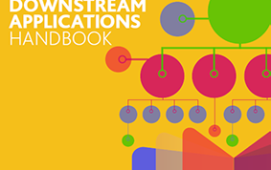
 Dr John Bates, AI technologist and CEO of SER, explores AI’s latest potential in extracting and making sense of this wealth of ESG intelligence.
Dr John Bates, AI technologist and CEO of SER, explores AI’s latest potential in extracting and making sense of this wealth of ESG intelligence.
In 2023, 120bn terabytes of content will be created, captured and consumed by businesses – growing by half as much again by 2025. Locked somewhere within all of that potential business intelligence is an untapped opportunity to understand how well those enterprises are performing against their social and corporate governance (ESG) targets. This applies as much to financial services companies as to creators and distributors of physical products.
Today, the vast majority of all enterprise knowledge is impenetrable: as much as 80% of it exists in static documents, emails or some other unstructured form, while 54% takes the form of “dark data” – completely undiscoverable digitally. Until now, that is. Next-generation AI tools now promise to surface and make sense of these previously impenetrable or uncombine-able knowledge resources, helping employers to better target their ESG efforts.
The challenge is not only to capture and structure all of this intelligence digitally and assign to it rich metadata (to aid its discovery), but also to link it in a meaningful way with associated data, and to then harness the latest AI techniques and tools to monitor, cross-analyse and distil meaningful insights from all of those inter-related knowledge assets.
The growing range of AI options
AI technology is very effective in pattern matching, especially now – thanks to a wide range of deep learning capabilities, from visual analysis/image recognition to natural language processing (NLP). These can help to precisely identify and capture what the content is, through a process of continuous scanning. They can also build up metadata (assigned wisdom) about the subject (e.g. an employee) through “understanding” each document.
The application of “contextual AI” adds further value, helping companies to understand how each item of content adds to the overall intelligence around a topic. This is about joining the dots between content with related metadata, to capture the context of content and compare/contrast related information over time. This builds the ability to understand correlations, trends and outliers/red flags – or untapped opportunities – on demand. It is through this application of AI that a company might determine the link between a particular manager and colleagues feeling held back or under-developed, for example.
Then there are intelligent content assistants, boosting AI’s role in search and discovery – a kind of ChatGPT equivalent for the workplace; in other words a bot that can query an enterprise’s metadata-enabled content to distil insights.
Making lighter work of fact-finding
Even just transforming the everyday lives of knowledge workers, who typically spend over a third of their day hunting for information to complete a task – for instance, to progress a loan or mortgage application or insurance claim settlement, or resolve a customer compliant swiftly – can boost employees’ wellbeing, by enabling them to complete their work and meet targets more effectively.
To stay open to all of the possibilities, it’s important to make content infrastructures and platforms as flexible as possible, so that new tools and capabilities can be added over time.
About the author
Dr John Bates is a former Cambridge Don who became addicted to starting and growing businesses, often linked to his primary research field of AI, smart algorithms and intelligent analytics. Today he is the CEO of SER, which specialises in intelligent content automation (ICA) – the convergence of content management (capturing, storing, searching, archiving, and managing enterprise content), business process automation and AI-powered content understanding.
Subscribe to our newsletter




